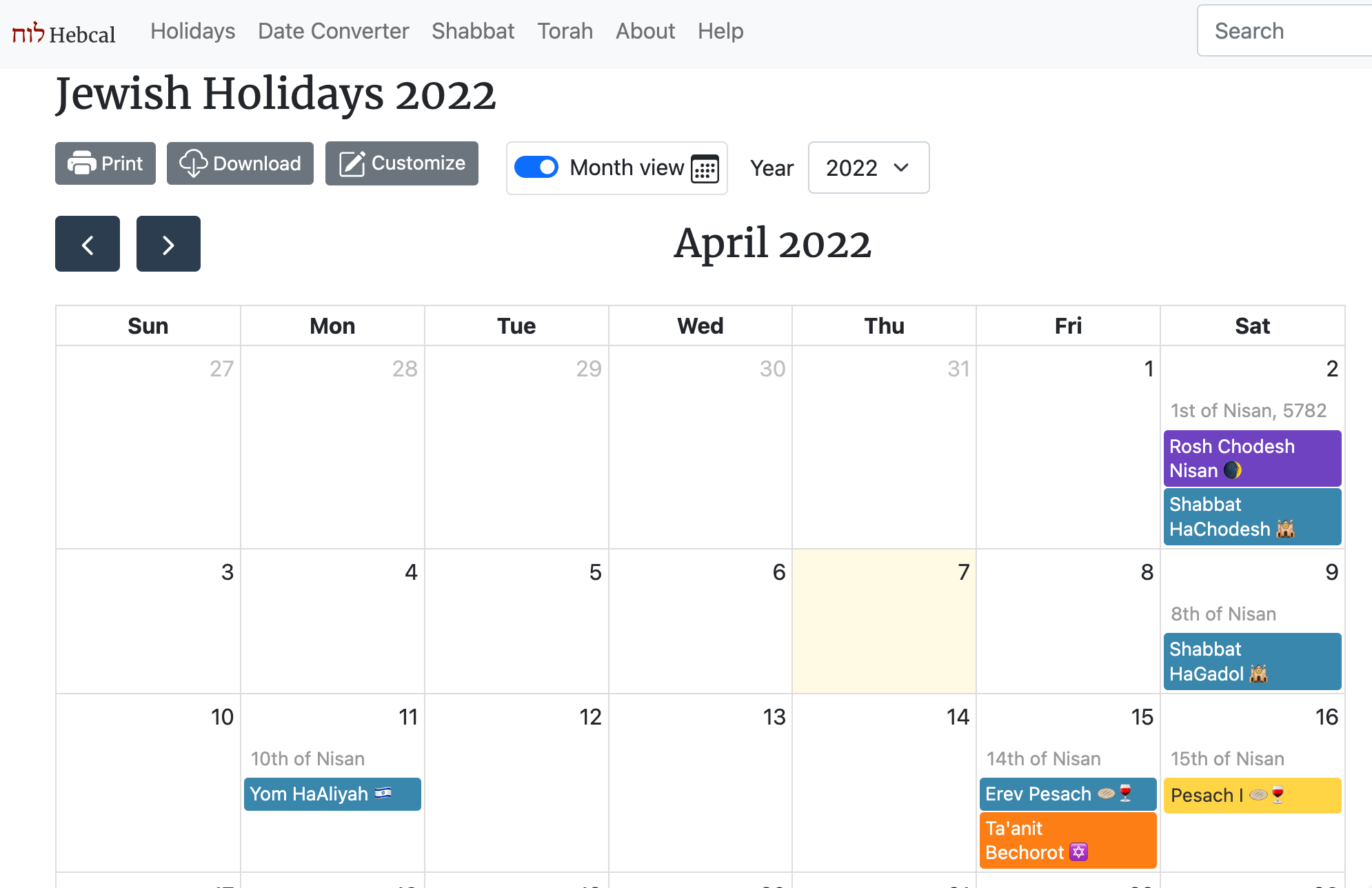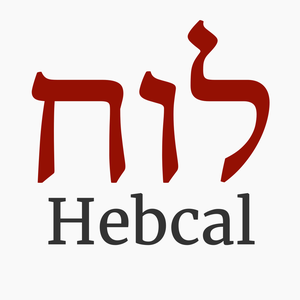Your comments
Hi, we're so sorry, but we are pretty certain that DE-Stuttgart or FR-Strasbourg have never worked. We can't find those references anywhere in our code.
We do support a small number (approximately 500) of legacy city names (e.g. geo=city&city=DE-Munich) but we haven't updated that list in over 4 years. That list does not contain thousands of cities, nor does it contain DE-Stuttgart or FR-Strasbourg
https://github.com/hebcal/dotcom/blob/v1.1/hebcal.com/dist/cities2.txt
I hope this information helps.
Shabbat Shalom!
Thanks for using Hebcal, and thanks for the bug report! This issue has been confirmed and is now fixed. RSS feeds on our site have been updated. Here's an excerpt with the corrected information for this week:
Parashat Metzora - 9 April 2022
Torah: Leviticus 14:1-15:33
Haftarah: Malachi 3:4-24 | Shabbat HaGadol
Please note, due to caching, it may take up to 24 hours for your server or browser to show the updated content.
Shabbat Shalom and Chag Pesach Sameach!
Hi, thanks for using Hebcal.
Please follow our Microsoft Outlook Jewish holidays download for Office 365 instructions to add a Hebcal Jewish holiday calendar 5-year feed to newer versions of Microsoft Outlook. This technique uses Outlook’s “Internet Calendar Subscription” feature which keeps a separate calendar from your primary calendar. The calendar appears as an “overlay” and can be managed separately from your main calendar.
This method is preferred for modern versions of Outlook, e.g. Office 365, Outlook 2016, Outlook 2013, etc. We still support the legacy CSV Jewish holiday download option used by Outlook 2007 and earlier versions.
Our apologies for the long delay in answering this question.
Hi, thanks for using Hebcal, and thanks for posting this question.
We have revised the "month view" on our holiday pages and moved the previous/next navigation buttons from the right side of the page to the left side of the page to improve their visibility. See below for a screenshot.
In addition, if you are using a device with a keyboard can use the arrow keys (left and right) to go backwards or forwards a month.
We hope these changes help improve the usability of the website!

Hi, thanks for using Hebcal API. We're sorry to hear that you are having difficulty getting API results for Stuttgart and Strasbourg.
You can use URLs like these to get Shabbat times for these cities.
Stuttgart, Baden-Wuerttemberg, Germany
Strasbourg, Grand Est, France
Please note that the preferred way to access world cities is to use the GeoNames IDs as we've done above.
The following options are available for our APIs:
- geo=geoname – location specified by GeoNames.org numeric ID
- requires additional parameter geonameid=3448439
- Hebcal.com supports approximately 47,000 different GeoNames IDs. These are cities with a population of 5000+. See cities5000.zip from https://download.geonames.org/export/dump/.
- geo=zip – location specified by United States ZIP code
- requires additional parameter zip=90210
- geo=city – location specified by one of the Hebcal.com legacy city identifiers
- requires additional parameter city=GB-London
- geo=pos – location specified by latitude, longitude, and timezone. Requires additional 3 parameters:
- latitude=[-90.0 to 90.0] – latitude in decimal format (e.g.
31.76904or-23.5475) - longitude=[-180.0 to 180.0] – longitude decimal format (e.g.
35.21633or-46.63611) - tzid=TimezoneIdentifier. See List of tz database time zones. Be sure to use the “TZ database name” such as America/New_York or Europe/Paris, not a UTC offset
- latitude=[-90.0 to 90.0] – latitude in decimal format (e.g.
Thanks for using Hebcal, and thanks for this feedback!
We agree with you and would like to publish more comprehensive Sephardi Haftarot on the website. The regular weekly Torah reading already includes Sephardic Haftarah when it differs from Askhenazi practice, but we do not have the same sources for holidays yet. We do need an accurate and comprehensive source of information for that. Can you recommend a source we could use?
Hi, thanks for using Hebcal.
We believe the date conversions provided by Hebcal are correct.
The 27th of Adar II, 5736 was in fact Monday, 29 March 1976.
Tuesday, 30 March 1976 corresponds to the 28th of Adar II, 5736.
Gregorian leap years are already correctly accounted for in date conversions. For example, note the date conversions for February 28 and February 29 in 1976:
https://www.hebcal.com/converter?gd=28&gm=2&gy=1976&g2h=1
https://www.hebcal.com/converter?gd=29&gm=2&gy=1976&g2h=1
If you can find another date conversion source that disagrees with our calculations, please post the reference here so we can investigate further.
Hi, thanks for using Hebcal, and thanks for the bug report!
We've fixed the font size issue; please refresh and it should solve the problem.
We have also fixed the links on Israel Torah reading pages to point to the Diaspora versions for Triennial more reliably.
Hi, thanks for using Hebcal
We already include Bournemouth in our list of cities:
Customer support service by UserEcho


Hi Eytal, thanks for writing.
This is intentional. As we discussed 6 months ago, the weekday readings are in a separate file from holiday and Shabbat readings.
To summarize here,